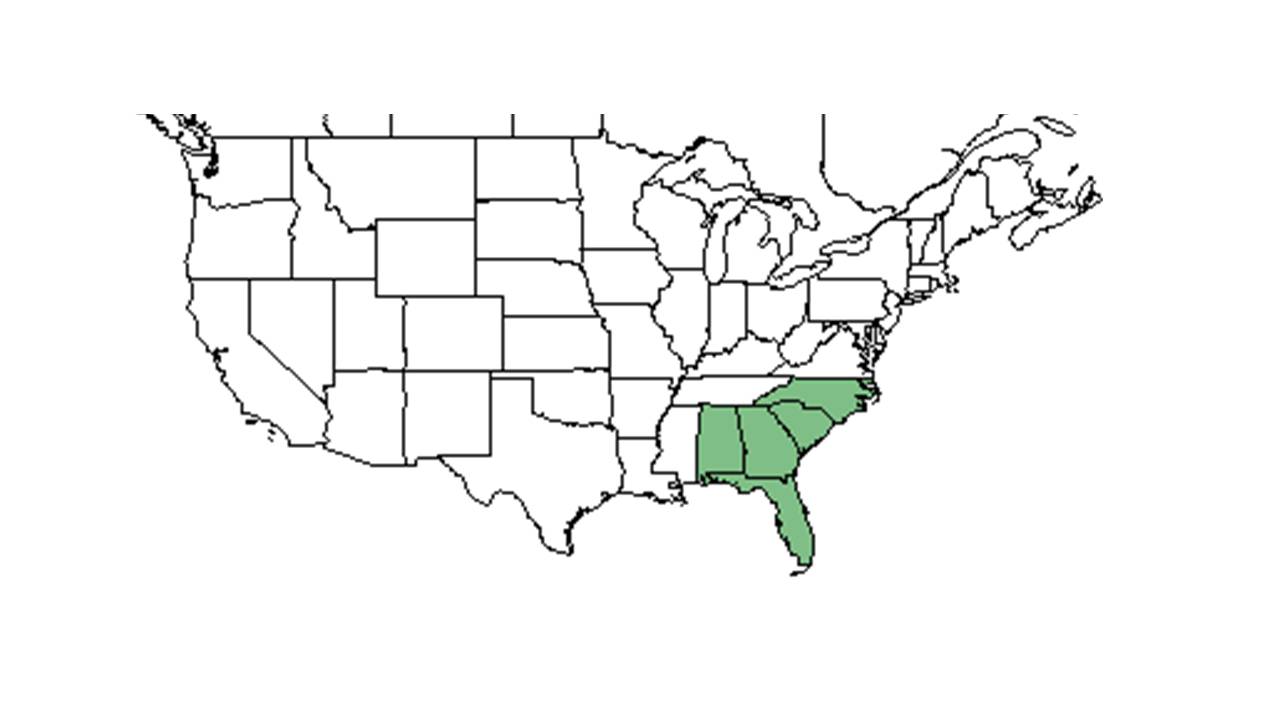Difference between revisions of "Euphorbia curtisii"
(→Description) |
(→Ecology) |
||
| Line 23: | Line 23: | ||
==Distribution== | ==Distribution== | ||
==Ecology== | ==Ecology== | ||
| − | E. curtisii was absent before herbicide treatments near the end of the growing season but present after. This might be because of increased availability of resources.<ref>Bohn, K. K., P. Minogue, et al. (2011). "Control of invasive Japanese Climbing Fern (Lygodium japonicum) and response of native ground cover during restoration of a disturbed longleaf pine ecosystem." Ecological Restoration 29: 346-356.</ref> | + | ''E. curtisii'' was absent before herbicide treatments near the end of the growing season but present after. This might be because of increased availability of resources.<ref>Bohn, K. K., P. Minogue, et al. (2011). "Control of invasive Japanese Climbing Fern (Lygodium japonicum) and response of native ground cover during restoration of a disturbed longleaf pine ecosystem." Ecological Restoration 29: 346-356.</ref> |
===Habitat=== <!--Natural communities, human disturbed habitats, topography, hydrology, soils, light, fire regime requirements for removal of competition, etc.--> | ===Habitat=== <!--Natural communities, human disturbed habitats, topography, hydrology, soils, light, fire regime requirements for removal of competition, etc.--> | ||
===Phenology=== <!--Timing off flowering, fruiting, seed dispersal, and environmental triggers. Cite PanFlora website if appropriate: http://www.gilnelson.com/PanFlora/ --> | ===Phenology=== <!--Timing off flowering, fruiting, seed dispersal, and environmental triggers. Cite PanFlora website if appropriate: http://www.gilnelson.com/PanFlora/ --> | ||
| Line 32: | Line 32: | ||
===Use by animals=== <!--Herbivory, granivory, insect hosting, etc.--> | ===Use by animals=== <!--Herbivory, granivory, insect hosting, etc.--> | ||
===Diseases and parasites=== | ===Diseases and parasites=== | ||
| + | |||
==Conservation and Management== | ==Conservation and Management== | ||
==Cultivation and restoration== | ==Cultivation and restoration== | ||
==Photo Gallery== | ==Photo Gallery== | ||
==References and notes== | ==References and notes== | ||
Revision as of 19:17, 13 July 2015
| Euphorbia curtisii | |
|---|---|

| |
| Scientific classification | |
| Kingdom: | Plantae |
| Division: | Magnoliophyta - Flowering plants |
| Class: | Magnoliopsida – Dicotyledons |
| Order: | Euphorbiales |
| Family: | Euphorbiaceae |
| Genus: | Euphorbia |
| Species: | E. curtisii |
| Binomial name | |
| Euphorbia curtisii Engelm. | |

| |
| Natural range of Euphorbia curtisii from USDA NRCS Plants Database. | |
Contents
Description
Common Name: Curtis' spurge
Distribution
Ecology
E. curtisii was absent before herbicide treatments near the end of the growing season but present after. This might be because of increased availability of resources.[1]
Habitat
Phenology
Seed dispersal
Seed bank and germination
Fire ecology
Pollination
Use by animals
Diseases and parasites
Conservation and Management
Cultivation and restoration
Photo Gallery
References and notes
- ↑ Bohn, K. K., P. Minogue, et al. (2011). "Control of invasive Japanese Climbing Fern (Lygodium japonicum) and response of native ground cover during restoration of a disturbed longleaf pine ecosystem." Ecological Restoration 29: 346-356.